Veteran fiber amplifier provider Bian Optoelectronics (Shanghai BA Technology Co.,Ltd) has launched a new AEC (Automatic Energy Control) fiber amplifier.
The usual fiber amplifier EDFA/YDFA generally has three control modes:
1. Automatic Power Control (APC) mode
APC: Auto Power Control, automatic power control or constant power mode, means that no matter how the input power Pi changes, this mode adjusts the amplifier gain in real time by detecting the output power Po to ensure the constant output power Po.
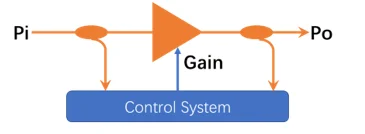
Fig1 APC Schematic Diagram
Po=Pi+Gain
For example, when the input power Pi decreases due to line attenuation or system aging, and the control system detects that Po decreases, the system will automatically increase the gain Gain, usually by increasing the Pump power to increase the gain, so that the output power remains constant, by the following formula Express:
Po=Pi-△Pi+Gain+△Gain=Constant
Generally, in a single-channel optical fiber communication system, such as CATV optical transmission system and SDH optical transmission system, the APC control system is used for the optical fiber amplifier to ensure the stability of the communication system.
2. Automatic gain control mode (AGC) mode
AGC: Auto Gain Control, automatic gain control or constant gain mode, which means that no matter how the input power Pi changes, this mode adjusts the pump laser current inside the amplifier and the built-in VOA (adjustable attenuator) in real time by detecting the input power Pi and output power Po. ) to keep the amplifier gain constant.
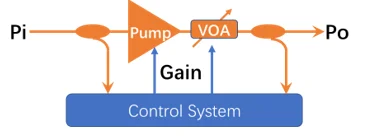
Fig2 AGC Schematic Diagram
Gain=Po-Pi
For example, when the input power Pi decreases due to line attenuation or system aging, the control system detects that the gain has changed (usually when the input power decreases and the control system is inconvenient, the gain will increase), then the system will automatically reduce the gain Gain , usually by reducing the Pump power or increasing the attenuation of the internal VOA to reduce the gain, so that the gain remains constant, expressed by the following formula:
Gain=Po-Pi=Constant
Generally, in the DWDM multi-channel optical fiber communication system, the optical fiber amplifier adopts the AGC control system to ensure the stability of the communication system.
3. Automatic current control (ACC) mode
ACC: Auto Current Control, automatic current control or constant power mode, which means that no matter how the input power Pi and the output power change, this mode only guarantees the constant Pump drive current, that is, the constant Pump excitation function under certain conditions.
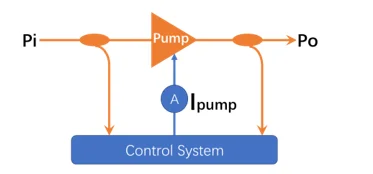
Fig3 ACC Schematic Diagram
In this control mode, the decision-making of the control system does not refer to any changes in input and output power, but only keeps the Pump drive current constant.
Generally in some scientific research systems, researchers want to take over the decision-making of the entire amplifier to control the amplifier will use this mode. However, if this mode is used in a system that works automatically for a long time, the system will be unstable because there is no automatic feedback mechanism related to the optical layer.
As fiber amplifiers are increasingly used in some non-communication fields, such as fiber sensing, industrial laser, lidar, etc., fiber amplifiers are often required to amplify pulsed optical signals, especially low duty cycle high peak power pulsed signals , such as fiber-optic sensing DTS signals, laser ranging or lidar signals, ns-level pulse width, kHz or less repetition frequency. Due to the narrow pulse width and low duty ratio of this type of signal, the conventional method cannot accurately detect the output power and cannot realize the APC mode, so the ACC mode has been reluctantly used for control.
The ACC mode can only realize the amplification of the amplifier, but in use, due to the change of input power, the change of ambient temperature, the attenuation of the line, and the aging of the device, the output power of the system will change slowly or quickly, and the ACC mode itself cannot be used. This change is adjusted, and this mode is actually an open-loop mode for the amplifier optics, which makes it impossible to use a good fiber amplifier in the system that requires relatively high pulse amplification accuracy in the industry.
Recently, Biantech launched an amplifier based on pulse energy detection feedback control, which has solved the problem that has long plagued the industry. This control mode is called:
Auto Energy Control Mode (AEC: Auto Energy Control)
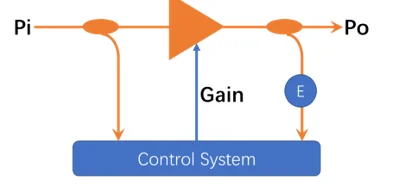
Fig4 AEC Schematic Diagram
The core technology of this mode is the energy detection circuit patented by Biantech. This technology can detect the energy of each amplified pulse, that is, quickly integrate each pulse to obtain the energy of each pulse: Energy=
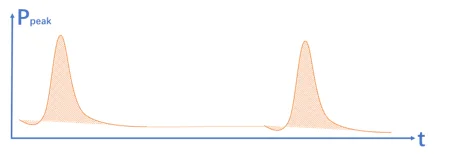
Fig5 Pulse Energy Integral Schematic Diagram
Then the control system compares the pulse energy and adjusts the gain of the amplifier in real time to ensure the stability of the output pulse energy. Usually, the pulse width and shape of the pulse will not be changed for the amplifier, so the constant energy determines the constant peak power of the output pulse.
The AEC mode is especially suitable for the pulse amplifier, which is very effective to quickly maintain the stable output of the pulse under the change of ambient temperature. For example, when a pulsed fiber amplifier used in a major device is controlled in ACC mode, the thermal stabilization of the device takes a long time, resulting in an hour-long stabilization time for the pulse output, and it is easily affected by the ambient temperature. After adopting Biantech's AEC control mode amplifier, the stabilization time is shortened to minutes, and the process is not affected by environmental changes, which shortens the system work preparation time by a hundred times and improves the system pulse stability by dozens of times.
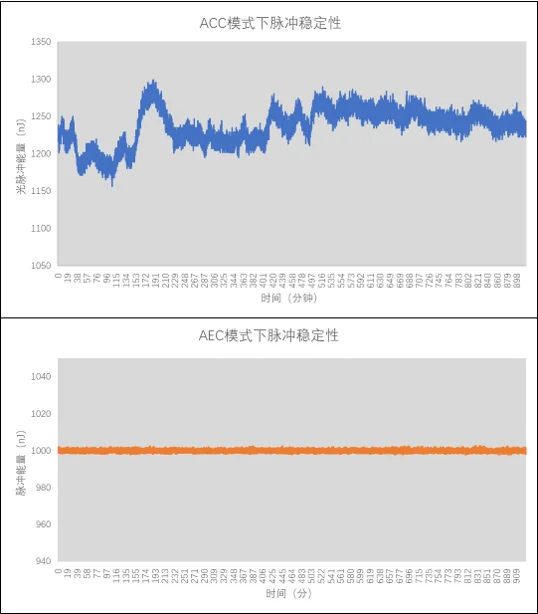
Fig6 ACC vs AEC in pulse Optical Amplifier
As can be seen from the above figure, when the optical amplifier is in the ACC mode, due to the establishment of the thermal balance of the equipment, the system needs 2 to 3 hours to stabilize, and the process is highly susceptible to changes in ambient temperature. Due to the fast feedback with energy monitoring, the system quickly establishes stability and achieves long-term stability that is not affected by the external environment.
The core energy detection module is also packaged into a separate product with data interface output, which is especially suitable for applications where the system requires long-term energy online monitoring.
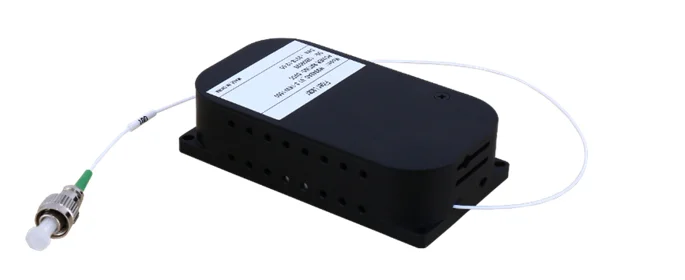
Fig7. Energy Monitor Module
Shanghai BA Technology Co.,Ltd is a senior optical fiber amplifier and optical fiber communication subsystem provider. It has a 17-year development history and is a high-tech enterprise specializing in the research and development, production and sales of optical fiber communication technology. The company has long focused on the innovation and engineering of optical fiber amplification technology, optical fiber transmission technology, and optical fiber detection technology. Products are used in optical fiber backbone communication, optical fiber access, cable television, industry, scientific research, medical and other fields. Products include fiber amplifiers, fiber communication subsystems, various light sources and optoelectronic solutions. At present, there are more than 500,000 sets of equipment running online in Bian's production, which are distributed in all corners of the world.
The company's headquarters is located in Zhangjiang High-tech Park, Pudong, Shanghai. As of December 2020, the company has 55 patented technologies, a team of more than 200 employees and an office area of 3,000 square meters. It has good research and development conditions, advanced production and testing equipment, and passed the ISO9001:2008 quality system certified by SGS in 2008. Most of its products have obtained certifications such as radio and television network access certificate, telecom network access certificate, CE, UL and other certifications. Fund support, major science and technology special funds of the Ministry of Science and Technology of the People's Republic of China, national high-tech enterprises, national-level specialized and special new enterprises, etc.








